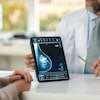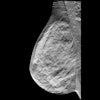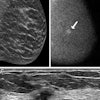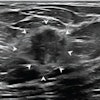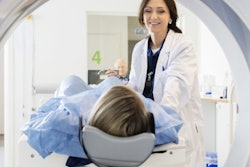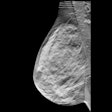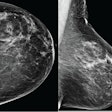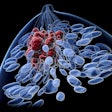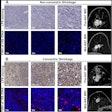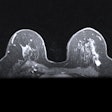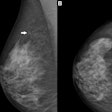A new study has found that conebeam breast CT (CBBCT) is comparable to MRI in identifying the extent of breast cancer, giving it potential as an alternative to breast MR in patients who can't tolerate that exam, according to researchers at Elizabeth Wende Breast Care in Rochester, NY.
CBBCT is still an investigational technology, but it has multiple potential roles in breast imaging, one of which could be following up suspicious lesions found on screening mammography. MRI is currently widely used in this role, but CBBCT could be an option for women who can't tolerate MRI because they are claustrophobic, have implantable devices, or are obese.
"We wanted to compare exams from women who had a contrast-enhanced breast MRI to women who had breast CT with and without contrast," lead researcher Posy Seifert, DO, told AuntMinnie.com.
The study enrolled women with breast lesions categorized as BI-RADS 4 and 5; the cohort consisted of 55 subjects who consented to have contrast-enhanced CBBCT or noncontrast CBBCT, and who underwent MRI following breast cancer diagnosis, according to Seifert. She presented the data at the 2010 RSNA meeting in Chicago.
Of the 55 women in the cohort, CBBCT and MR agreed in 93% of the lesions (51 of 55). There were discordant results in 7% (four of 50). In 50% of the discordant lesions, CBBCT revealed original cancerous lesions not seen on MRI. In one case, only signal void was seen in the area of concern on MRI; in the second case, CBBCT clearly visualized the area of calcium that was difficult to assess on MRI. In the other 50% of the discordant lesions, MRI revealed original cancerous lesions not seen on CBBCT.
Additional lesions were identified in 17 cases; nine were visualized by both CBBCT and MR, and eight cases were discordant. CBBCT found two lesions that MR did not, both of which were noncontrast CBBCT cases. MRI identified six lesions that CT did not: One case was contrast-enhanced CBBCT, where MRI showed adenopathy and the contrast enhanced CBBCT did not, and five cases were noncontrast CBBCT.
CBBCT is limited in imaging posterior axillary tissue -- further work on table ergonomics is needed, according to Seifert.
"Right now, for screening, mammography is the best technology we have to diagnose breast cancer," Seifert said. "But the problem is with women with very dense breasts. CBBCT is a promising technology to eliminate tissue overlap and hopefully detect breast cancers earlier. Larger studies are necessary for further evaluation of this technology."
By Kate Madden Yee
AuntMinnie.com staff writer
February 8, 2011

